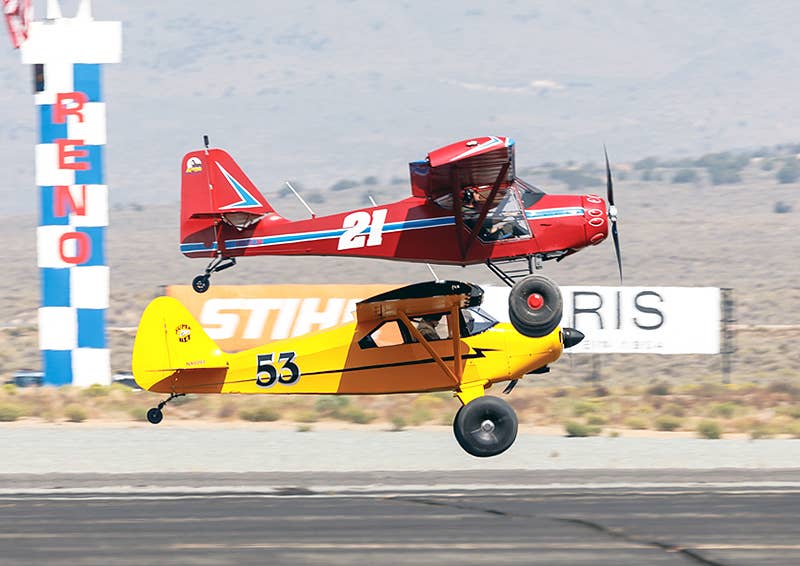
STOL Drag made its Reno Air Races debut last month. Mark Loper
“This is absolutely exciting!”
“This is what Reno needed!”
“I love how they are so close to us!”
“I love it! I don’t completely understand it yet, but I love it!”
Those are just some of the comments I heard from race fans at the first official STOL Drag race event to be held at the 2021 Reno Air Races. As crew chief for Race #44 flown by Steve Henry in the Gold class, I (along with pilots and crews from the other STOL Drag classes) sat together with the fans to watch the races.
The Basics
A common question we received both in the bleachers and in the pits is, “How does it actually work?”
STOL Drag (as its name implies) is a drag race. However, that’s only half of the equation. The first person to cross the finish line is not always the winner—that’s the first airplane that comes to a complete stop.
Unlike traditional drag racing with cars where braking has no factor, this type of race can be won in braking. Thus, in theory, a jet-powered aircraft may actually be beaten by, say, a Piper Clipper or the like, because the Clipper is lighter and can stop sooner.
As hypothetical and imaginative as this matchup seems, it can actually be seen in practice at the STOL Drag’s home event called the High Sierra Fly-In where the most unusual airplanes can be seen giving a shot at the event such as Pitts biplanes, de Havilland Beavers, and Mooneys.
If it flies, you might just see it on the drag strip.
Now, having said that, it has been proven that ultimately the most successful airplanes tend to be the backcountry types, which are often referred to as “bush planes.” This is because this is what they were designed for. Taking off short, and landing short is their forte.
The Rules
- Aircraft requirements: “Run what you brung.”
- Course: Upon receiving the signal to go, fly 2,000 feet and land on or after the line, come to a complete stop on a heading, turn 180 degrees, fly back and land on or after the start/ finish line. The first airplane to come to a complete stop with tail down (those with tailwheels) on heading wins.
The Cool Factor
The real entertainment as a spectator is being so close to the action and learning that the faster airplane doesn’t always win. The race is often won or lost in the turn around, but not always.
The excitement is palpable, especially for those fans who are familiar with Flying Cowboy YouTube stars, such as Trent Palmer, Steve Henry, Mike Patey, and the creator of STOL Drag Kevin Quinn, just to name a few.
Part of the appeal of this type of event is that people in the stands recognize types of competing aircraft that they themselves fly. Thus, they may pick out a Cessna as the airplane they are going to root for because they can envision themselves being out there doing it next time and that could very well be a possibility.
How do I Try That?
This sport doesn’t require special equipment or airplanes in the traditional classes at Reno, for example, which makes it a sport that’s more accessible for those who would like to get their feet wet in doing it.
There is, however, training that will be required to help ensure a safe and fun environment for everyone. If this is something that interests you either as a spectator or a beginning competitor, checkout Stoldrag.com for more information.

Subscribe to Our Newsletter
Get the latest FLYING stories delivered directly to your inbox






